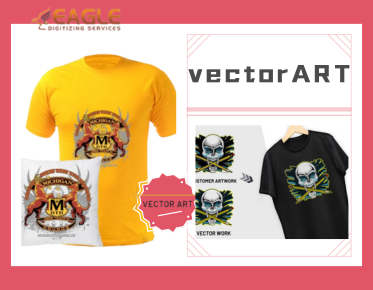Transforming Low-Resolution Hand-Drawn Images into High-Quality Embroidery Files
Embroidery digitizing is a fascinating process that involves converting artwork into a digital format that can be read by embroidery machines. This process is essential for anyone looking to transform their low-resolution hand-drawn images into high-quality embroidery files. Whether you're a business owner looking to brand your products or an individual wanting to personalize your items, understanding this process can significantly enhance the quality of your embroidery projects.
Understanding the Basics of Embroidery Digitizing
Embroidery digitizing is the art of using software to trace artwork with stitches, turning it into embroidery files. This method allows any piece of art to be converted into a language that embroidery machines can understand. The process is beneficial for embroidering company logos, symbols, artwork, and photos on fabric for promotional purposes. Companies like Eagle Digitizing specialize in this service, offering solutions that cater to a wide variety of client backgrounds.
Steps to Convert Hand-Drawn Images
Step 1: Preparing Your Artwork
The first step in converting a hand-drawn image into an embroidery file is to prepare the artwork. It's crucial to ensure that the image is as clear and high-quality as possible. While low-resolution images can be used, they often require more work to achieve the desired quality. Submitting a crisp and clear image with color separations can lead to a better final product.
Step 2: Choosing the Right Software
Choosing the right software is vital for successful embroidery digitizing. There are various software options available, each with its own set of features. Some popular choices include Wilcom, Hatch, and Pulse. These programs allow you to trace your artwork and convert it into a stitch file that can be read by embroidery machines.
Step 3: Digitizing the Image
Once you have your software ready, the next step is to digitize the image. This involves tracing the artwork with stitches, adjusting the stitch types, and setting the stitch density. The goal is to create a file that accurately represents the original artwork while ensuring it can be embroidered smoothly. Companies like Eagle Digitizing offer professional services to handle this complex process, ensuring high-quality results.
Challenges in Embroidery Digitizing
Embroidery digitizing can present several challenges, especially when working with low-resolution images. One common issue is maintaining the clarity and detail of the original artwork. This is where the expertise of professional digitizers becomes invaluable. They can make necessary adjustments to ensure the final embroidery file meets the desired standards.
Benefits of Professional Digitizing Services
Using professional digitizing services offers numerous benefits. For instance, Eagle Digitizing provides a quick turnaround time, often completing projects within 2 to 24 hours. They also offer free revisions and format conversions, ensuring complete customer satisfaction. Their skilled team is adept at using the latest digitizing software, which guarantees maximum accuracy and quality.
Applications of Embroidery Digitizing
Embroidery digitizing is widely used in various industries. It's particularly popular in the promotional industry, where companies use it to brand apparel, hats, and other items. Additionally, it is used for creating custom gifts, trade show giveaways, and corporate swag. The versatility of embroidery digitizing makes it a valuable tool for enhancing brand visibility and creating personalized products.
Future Trends in Embroidery Digitizing
As technology continues to evolve, the future of embroidery digitizing looks promising. We can expect to see advancements in software capabilities, allowing for even more intricate and detailed designs. Additionally, the integration of artificial intelligence could further streamline the digitizing process, making it more accessible to a broader audience. The demand for personalized and branded products is likely to drive innovation in this field, opening up new possibilities for creativity and customization.
Embroidery digitizing is a crucial process for anyone looking to convert hand-drawn images into high-quality embroidery files. By understanding the basics and leveraging professional services, you can achieve stunning results that enhance your products and brand. As the industry continues to grow, staying informed about the latest trends and technologies will be key to maximizing the potential of embroidery digitizing.



.png)